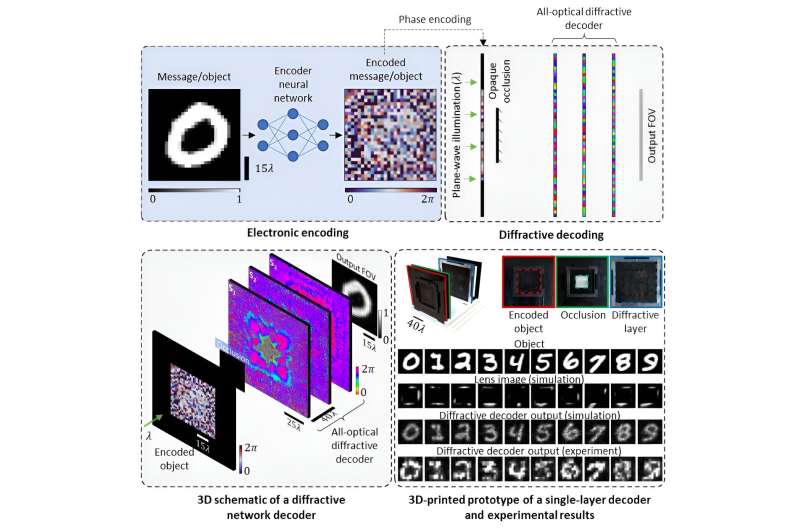This article has been reviewed according to Science X's editorial process and policies. Editors have highlighted the following attributes while ensuring the content's credibility:
fact-checked
peer-reviewed publication
trusted source
proofread
Team develops new method for communicating around arbitrary opaque walls

Information transfer in free space using ultraviolet, visible, or infrared waves has been gaining interest because of the availability of large bandwidth for high-data-rate communication. However, the presence of opaque occlusions or walls along the path between the transmitter and the receiver often impedes information transfer by blocking the direct line of sight.
In a new article published in Nature Communications, a team of researchers at UCLA Samueli School of Engineering and the California NanoSystems Institute, led by Dr. Aydogan Ozcan, the Chancellor's Professor of Electrical & Computer Engineering, and Dr. Mona Jarrahi, the Northrop Grumman Endowed Chair at UCLA, has reported a fundamentally new method for delivering optical information around arbitrarily shaped opaque occlusions or walls.
This method permits the transmission of optical information, for example, images, around large and dynamically changing opaque occlusions. It is based on digital encoding at the transmitter and diffractive all-optical decoding at the receiver for transferring information around arbitrary opaque occlusions that completely block the direct line of sight between the transmitter and the receiver apertures.
In this scheme, any image or spatial information of interest to be transferred is encoded in the phase channel of the transmitted wave. This transmitted phase structure is calculated by an encoder neural network trained using deep learning, and it is scattered by the opaque occlusion or wall that blocks the path between the transmitter and the receiver.
However, the scattered light from the edges of the opaque wall travels to a special receiver that is optimized to decode the encoder's message. This decoding of the received wave happens without any external power or digital data processing, and it only uses passive diffraction of light through a set of spatially engineered surfaces (diffractive layers) that have also been optimized using deep learning to all-optically recover the original information at the output field-of-view.
UCLA researchers demonstrated their method experimentally by transmitting images around arbitrarily shaped opaque occlusions/walls using terahertz waves. This method was shown to be resilient to unknown changes in the communication channel and can transmit images around opaque occlusions that change their size and shape over time. The researchers believe that their framework will find applications in emerging high-data-rate free space communication systems.
Furthermore, the UCLA team's approach to engineering the edge scattering function from opaque occlusions could also enable numerous applications in security, robotics, and wearable devices, including power delivery to mobile units beyond occlusions or seeing objects sandwiched between occlusions.
Authors of this work are Md Sadman Sakib Rahman, Tianyi Gan, Emir Arda Deger, Çağatay Işıl, Mona Jarrahi, and Aydogan Ozcan of UCLA Samueli School of Engineering and the California NanoSystems Institute (CNSI).
More information: Md Sadman Sakib Rahman et al, Learning diffractive optical communication around arbitrary opaque occlusions, Nature Communications (2023). DOI: 10.1038/s41467-023-42556-0
Journal information: Nature Communications




















